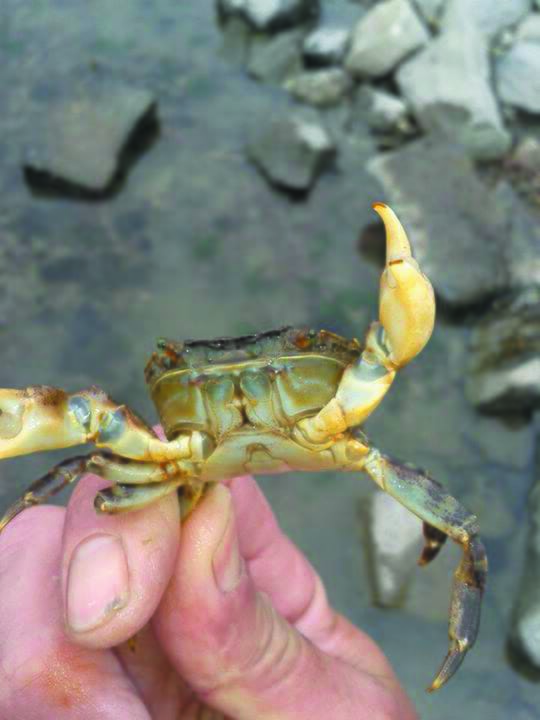The reports were received just a few days before a scientific paper was published predicting the most likely species to arrive in British waters and become invasive in the next 10 years. The Asian shore crab and its close relative the brush-clawed crab (Hemigrapsus takanoi) were both identified as high risk species in the consensus based paper, due to the high likelihood of arrival and establishment and potential threat to the environment.

The first record was made by an angler in Glamorgan on the 3 May. Then, on the 14 May, a second specimen was reported in Herne Bay, Kent.
Jack Sewell from the Marine Biological Association said: “Great Britain has an extensive coastline and observations from keen-eyed amateurs are vital in spotting new arrivals. We are grateful to Martin Burke and Dean Pearson for taking good photographs and sending the records to us. This means we have been able to alert conservation authorities. It is interesting that the two records were received in a short space of time from two locations so far apart. And we are keen to find out why.”
Paul Clark, crab specialist at the Natural History Museum, London added: “I would like to see a live crab so if you do find a live specimen please make contact with me and I will arrange for it to be collected.” (0)20 7942 5000.
Native to the Northwest Pacific, this small crab (up to 4.5 cm across) has a distinctive square shaped shell (carapace) with three teeth on each side and distinctively banded legs. Females can produce around 50,000 eggs per clutch with three to four clutches per year. It was first recorded in Europe in 1999, scientists thinking it arrived in ballast water.
Natural Resources Wales will be surveying the area of the original record, to get a better understanding of the number of crabs in that area. NRW will also be working with colleagues across the United Kingdom to better understand the risk of spread.
Scientists are asking anyone finding this crab to take clear photographs of the crab and report the find at www.mba.ac.uk/recording


